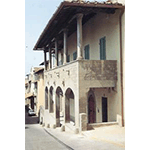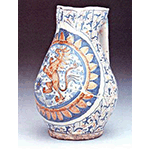Museo Archeologico e della Ceramica di Montelupo [Montelupo Museum of Archaeology and Ceramics]
With the construction of the Castle in the Late Middle Ages and with the presence of the Florentine Republic, which enlarged the town, the production of enameled ceramics, majolica, developed in the territory of Montelupo. It soon became the main activity of the area, transforming Montelupo into one of the most important centres of majolica production in the Mediterranean basin.
Il Museum, inaugurated in 1983, displays local ceramics production from the early 14th through the 18th century. It bears witness to the diffusion of majolica especially in Renaissance times, when the most prominent Florentine families turned to the kilns of Montelupo for objects in ceramics. The historic ceramics collection (around 1,500 items) covers a period ranging from around 1280 through the entire 18th century. The museum's itinerary includes an antique kiln, which still retains its original structures, in which a workshop on the ceramics production cycle has been set up.
The Museum also possesses a rich collection of archaeological findings (around 60,000 pieces) collected on the municipal territory, dating from Prehistoric times to the Middle Ages, as well as the Azzati Collection, consisting of some 150 objects in ceramics from the ancient civilisations of the Mediterranean, dating from 1200 B.C. to the 5th century.
****************************
Texts by Anna Toscano
English translation by Catherine Frost
Last update 16/gen/2008





